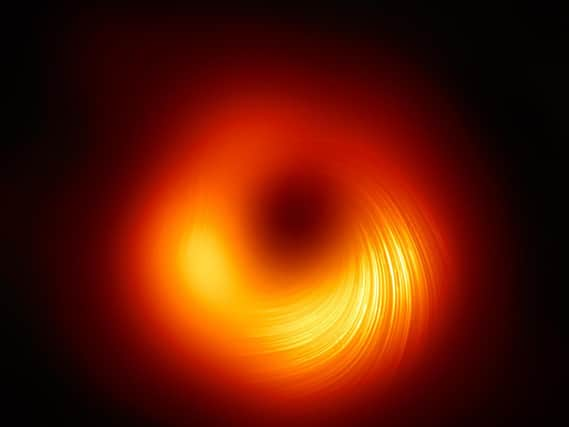M87: first black hole pictured by humanity is losing energy through 'lightsaber jets'


Black holes are known for their crushing gravity, and just a few years ago astronomers got a glimpse of the elusive giant known to devour anything its its path. However, new research has discovered the famous M87 black hole is now losing energy.
Previously, M87 was discovered by the Event Horizon telescope to be spinning, and its magnetic field is strong enough to prevent it from inhaling other nearby matter and drags the fabric of space and time with it.
Advertisement
Hide AdAdvertisement
Hide Ad“Even though black holes are defined as objects from which nothing can escape, one of the astonishing predictions of Einstein’s theory of relativity is that black holes can actually lose energy,” says Eliot Quataert, Princeton astrophysicist and current Member in the IAS School of Natural Sciences. “They can rotate, and just like a spinning top slows down over time and loses that energy in its rotation, a rotating black hole can also lose energy to its surroundings.”
However, the black hole is now losing energy outwards, not inward, and produce jets that are basically like million-light-year-long Jedi lightsabers,” said his former postdoctoral fellow Alexandru Lupsasca, and they can extend 10 times longer than the Milky Way galaxy. The results of their work appear in the current issue of The Astrophysical Journal.
"If you took the Earth, turned it all into TNT and blew it up 1,000 times a second for millions and millions of years, that's the amount of energy that we're getting out of M87," said study co-author George Wong of Princeton University.
Findings from the new study suggest the energy pouring out of the black hole leaves along the direction of its magnetic field. The study team is also entertaining a purely theoretical but exciting possibility that the energy pushed out from M87 could flow into a different black hole.
Advertisement
Hide AdAdvertisement
Hide Ad“Our new, sharp prediction is that whenever you look at an astrophysical black hole, if it has magnetic field lines attached to it, there will be energy transfer - truly insane amounts of energy transfer,” said Lupsasca, assistant professor of physics and mathematics at Vanderbilt University. "I think it's extremely likely the black hole powers the jet, but we can't prove it, yet."
Comment Guidelines
National World encourages reader discussion on our stories. User feedback, insights and back-and-forth exchanges add a rich layer of context to reporting. Please review our Community Guidelines before commenting.
